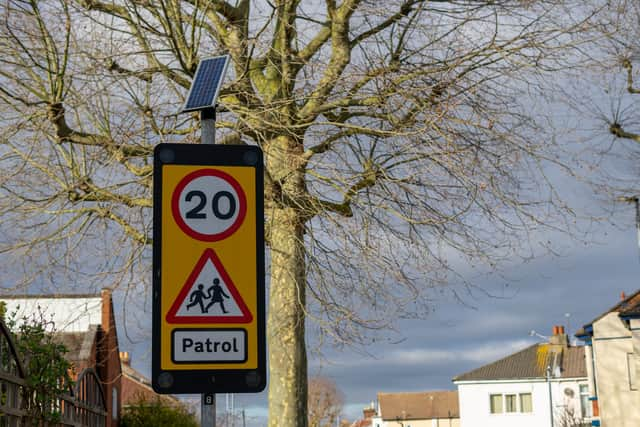20mph limit: safety campaigners call for speed limit cut around schools to tackle child road deaths
and live on Freeview channel 276
Safety campaigners have called for a blanket 20mph limit on all roads near schools.
Charity Brake says that cutting the speed limit would reduce the number of children killed or seriously injured each year.
Advertisement
Hide AdAdvertisement
Hide AdDepartment for Transport (DfT) figures show 2,456 children aged under 16 were killed or seriously injured on Britain’s roads last year.
Many councils have introduced 20mph zones around schools but Brake said nearly two-thirds of parents reported that some roads near their children’s schools have higher limits.
It said that there should be a mandatory limit of 20mph near schools along with speed reduction measures. But the DfT said it had no plans to introduce default speed limits, and that the matter was one for individual local authorities.
Brake campaigns manager Lucy Straker said: “We speak to lots of schools where teachers are doing everything they can to make the roads near their school safe, but ultimately they need support from their local council and decision-makers.
Advertisement
Hide AdAdvertisement
Hide Ad“Why do we have to wait until a child is killed before we act?”
“We know that excess speed is a factor in about a quarter of fatal crashes, and the physics is pretty straightforward: the faster a vehicle is travelling, the harder it hits and the greater the impact. A crash at 30mph has twice the amount of kinetic energy as a crash at 20mph. Reducing speed saves lives.”


Brake cited the example of Dropmore Infant School in Buckinghamshire where the limit on nearby roads is up to 60mph, and there are areas with no pavements.
Headteacher Gitta Streete said: “What we often hear back is that because no-one has been seriously hurt or killed on that road, there is no need to make any changes.
Advertisement
Hide AdAdvertisement
Hide Ad“One parent had their car door taken off by a passing car. That could easily have been a child, parent or carer being hit.
“What we need is a proper, phased speed reduction system: a reduction to 20mph outside the school and safe areas for everyone to walk along and cross the road.”
Steven Broadbent, Buckinghamshire Council’s cabinet member for transport, insisted the local authority takes road safety “incredibly seriously” and is “very much aware of the concerns that have been raised” in relation to Dropmore.
He went on: “We want to continue working as closely as possible with them and all schools to ensure all students have safe passage to and from school.”
Advertisement
Hide AdAdvertisement
Hide AdStraker said that Dropmore’s story was being repeated across the country and called for a national programme to cut speed limits around all schools.
A DfT spokesperson said: “Local authorities in England decide speed limits on their roads but we always encourage road designs that prioritise safety.
“There are no plans to introduce default or national 20mph speed limits in urban environments.”
Linda Taylor, transport spokesperson for the Local Government Association, said: “It is up to each individual council to introduce measures based on their own local needs, taking into account the views of the school, police and local residents.
Advertisement
Hide AdAdvertisement
Hide Ad“Speed limits exist for a reason and road users must observe them to keep children and parents safe.”
From September 17, the Welsh Government is introducing a default 20mph limit on residential roads and busy pedestrian streets. It said Wales will be “one of the first countries in the world, and the first nation in the UK” to introduce such legislation.
Comment Guidelines
National World encourages reader discussion on our stories. User feedback, insights and back-and-forth exchanges add a rich layer of context to reporting. Please review our Community Guidelines before commenting.
